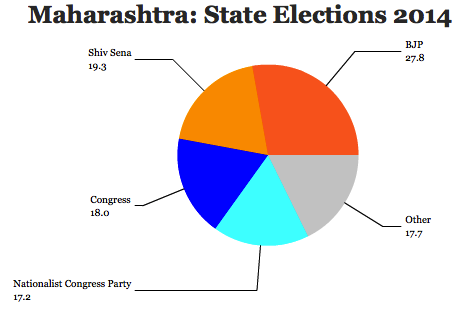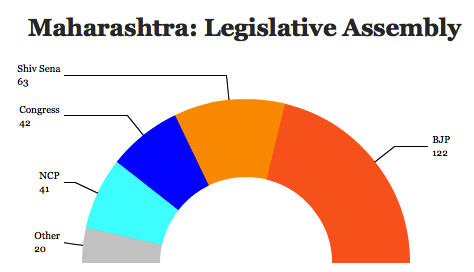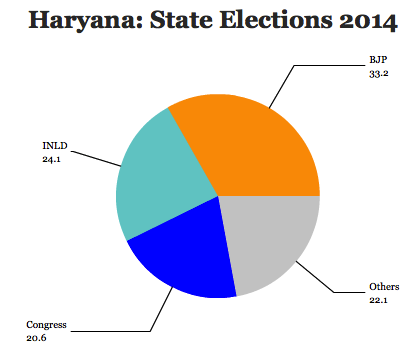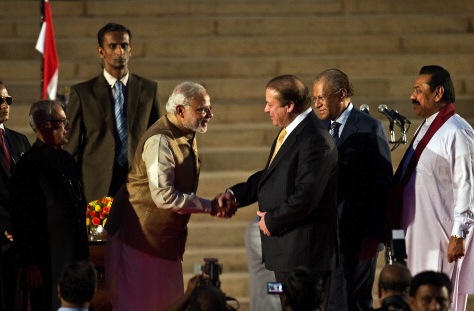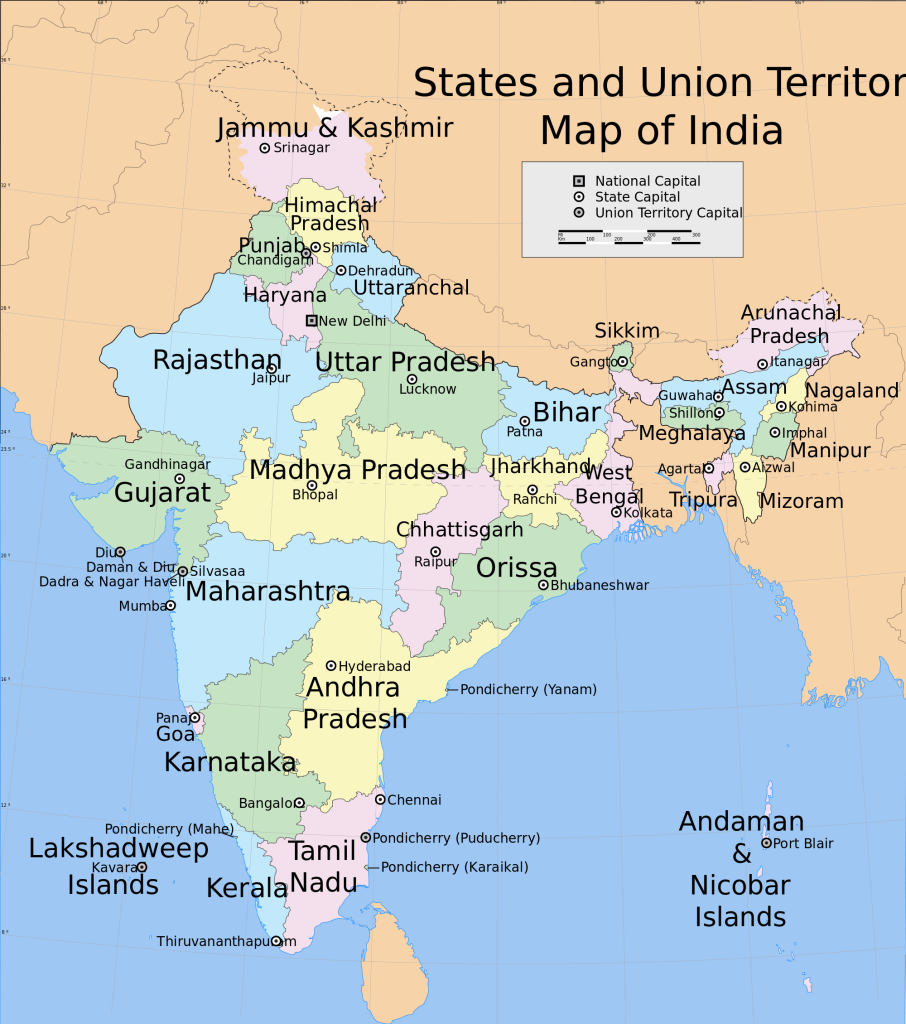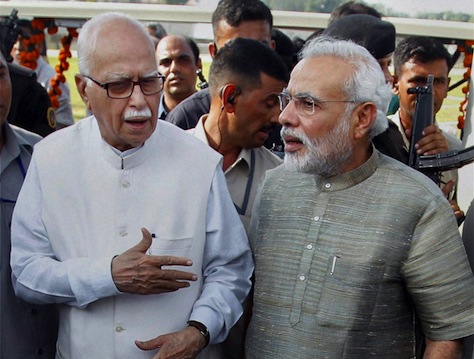Voters in two of India’s largest states elected regional assemblies last week on October 15 — in Maharashtra and Haryana.![]()
In both cases, the conservative, Hindu nationalist Bharatiya Janata Party (the BJP, भारतीय जनता पार्टी) will take power of state government for the first time in Indian history in what was the first major electoral test for prime minister Narendra Modi (pictured above), who swept to power nationally in May after promising to bring a new wave of economic prosperity, reform and good governance to India.
In Maharashtra, India’s second-most populous state, with over 112 million people, and home to Mumbai, India’s sprawling financial and cultural center, the BJP won a plurality of the vote and the largest number of seats in the 288-member regional assembly, where it will form a coalition government with either its longtime ally, the far-right, Marathi nationalist Shiv Sena (शिवसेना) or a more intriguing option, the center-left Nationalist Congress Party (NCP, राष्ट्रवादी कॉँग्रस पक्ष), which unexpectedly offered to support a BJP government shortly after the results were announced on October 19:
In Haryana, a state with just 25.4 million people, which forms much of the hinterland of New Delhi, the BJP won an outright majority of seats in the 90-member legislative assembly:
There are at least four narratives about what happened in these two absolutely pivotal state elections, the first since India’s national election cycle in April and May. Keep in mind that, together, the two states have a population of 137 million, larger than Japan.
The first narrative confirms the BJP’s political dominance in the honeymoon period of the Modi era. The second narrative is its direct analog, the post-independence nadir of the Nehru-Gandhi family and the chief opposition party, the Indian National Congress (Congress, भारतीय राष्ट्रीय कांग्रेस).
The third narrative, with almost as much national importance as the first two, is the rift between the BJP and its longtime ally, Shiv Sena, and the possibility that Shiv Sena will be shut out of the next Maharashtra government.
The fourth and final narrative has to do with India’s third parties, especially as the election relates to the anti-corruption Aam Aadmi Party (AAP, आम आदमी की पार्टी, Common Man Party), which didn’t even bother contesting the Haryana elections and may soon lose its one-time grip on Delhi’s government. Continue reading Four lessons as Modi wave extends to Maharashtra, Haryana

